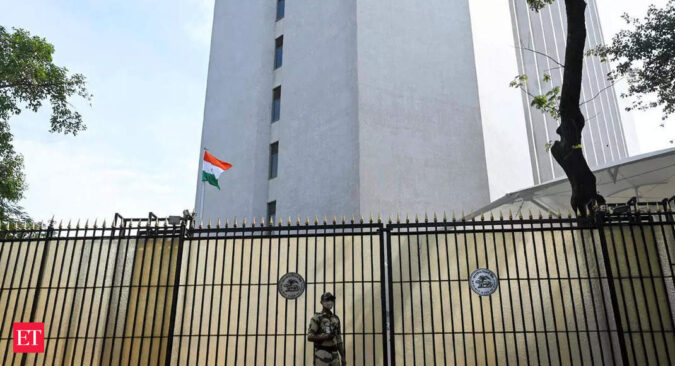In the current cycle of rate hardening, the cumulative rate increase by the Reserve Bank of India (RBI) is exactly half of what the US Federal Reserve has done so far. Even the European Central Bank (ECB), which trailed its trans-Atlantic counterpart by about six months to start its own cycle of rate hardening, boosted the cost of funds one and a half times more than what the RBI chose to do since the early summer of 2022.
Yet, the outcomes, in a nutshell, of such moves globally couldn’t be more divergent: Growth – not inflation – is flagging in the Eurozone and the US, with drawing-room conversations dominated by the rounds of layoffs to be endured. New Delhi, by contrast, is logging world-beating rates of nominal growth – and without the contribution of prices.
It is natural, therefore, odds are already shortening that the RBI will once again hold rates where they are when the key panel tasked with fixing the cost of funds announces its decision next Thursday. The foundational basis for such favourable odds lies in incoming data – both at home and overseas.
For a start, producer tax (GST) collections show no signs of letting up, indicating sufficiently strong economic activity through a period of steady rate increases over 11 months before April brought the first ‘pause’ in the northward direction for rates. For the fifth month in six years, collections exceeded Rs 1.5 lakh crore, with recent months accounting for the majority of such positive breaches.
Meanwhile, nearing 59, the latest reading on the Manufacturing Purchasing Managers’ Index (PMI) indicates a degree of robustness in factory output not seen since plants first reopened after the prolonged Covid shutdown through the summer of 2020. Overall economic expansion in the March quarter, too, has exceeded ballpark estimates by a fair margin, establishing India’s standout growth credentials through a year in which global economic expansion – by even the most optimistic of assessments – is expected to be modest.Demand-Driven Expansion
Yet, the heartening aspect of the current phase of outlying Indian growth is the evident absence of pricing pressures that optically push up nominal output, requiring the RBI to raise the cost of funds. Even when the economy expanded at a rate exceeding expectations through the March quarter, the consumer price index (CPI) trended sharply lower, albeit aided by a lower statistical base.Over the first four months of 2023, the CPI has declined more than 180 basis points, but the retreat hasn’t come in lockstep with moderation in nominal growth. That indicates greater volume, or demand, contribution to growth than unit price contribution, suggesting demand resilience in the face of the 250 basis-point increase in benchmark rates over the past one year.
One basis point is 0.01 percentage point.
The central bank’s calibrated approach to growth and prices is even more evident in the trend of wholesale prices. The index for producer prices, adequately reflecting input cost inflation, had surged past 15% as late as April 2022. But that gauge showed contraction in relative terms this April, validating the RBI assessment of durable moderation in input prices and the concomitant impact of such a trend in consumer prices.
Pause for a Cause
That should mean the RBI might go in for a prolonged ‘pause’ in its rate action even though the cumulative increase in India’s cost of funds is barely half of that Stateside in the current round of hardening – and the US Fed might still not have been done yet raising rates.
It is true that the US, too, might hit the pause button when members of its rate-setting panel meet the week after the next, but Bloomberg reported midweek bets north of 30% that the Fed might still raise rates in June – after having lifted the cost of funds by 5 percentage points in the fastest pace of increase in decades.
The May jobs data, due late Friday India time, might still sway the Federal Reserve’s policy approach to rates, especially if the statistics suggest greater-than-anticipated quickening in both the absolute number of job additions and average wages.
Across the Atlantic, macro-economic challenges of high inflation and low growth are still far from resolution. The latest monthly inflation print in the Eurozone is above 6% – three times of the European Central Bank (ECB) target. Its President Christine Lagarde was cited as saying this week that although the bank “is getting closer to our cruising altitude,” it is not there yet.
There will be additions, therefore, in the Eurozone to the 3.75 percentage point cumulative increase, although the pace of further rate tightening will be slower.
The RBI, clearly, appears to be ahead of the curve on this one.
